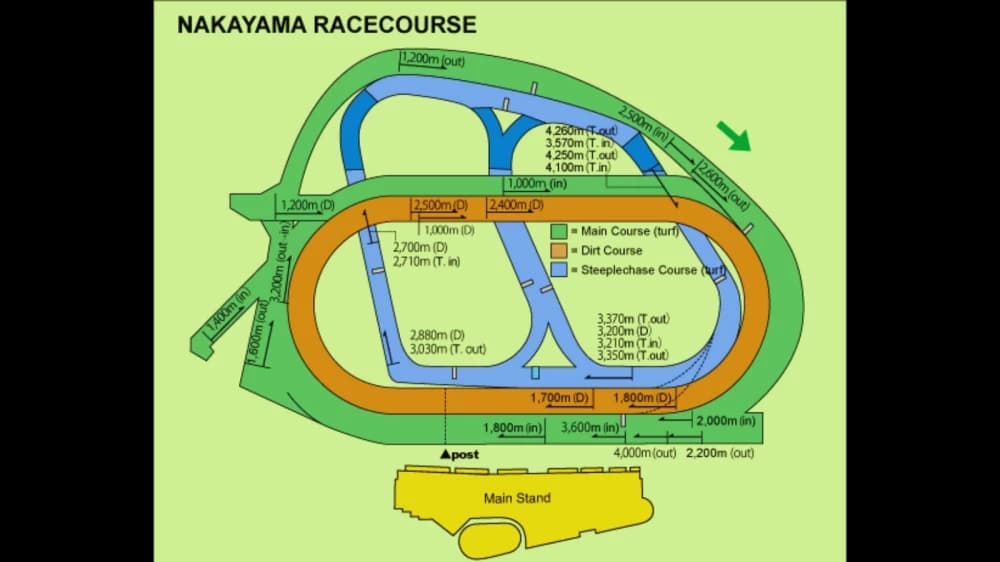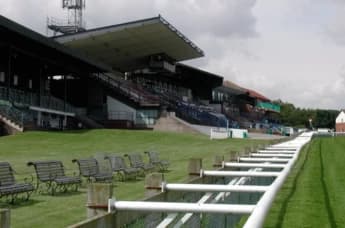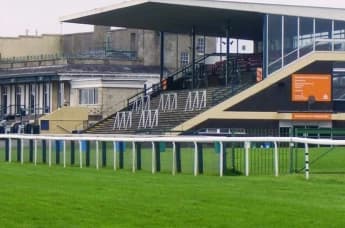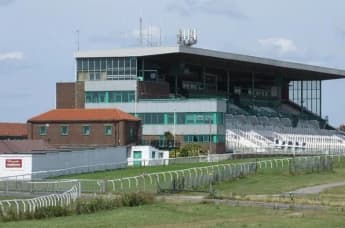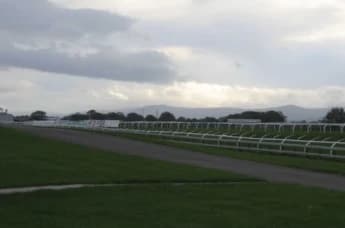Nakayama Racecourse stands as a testament to Japan's rich horse racing history, blending tradition with modern excitement, and serving as a proving ground for future champions.
The racecourse, managed by the Japan Racing Association (JRA), has been instrumental in the careers of numerous iconic horses and jockeys. Nakayama’s unique characteristics, including its steep uphill finish and tight turns, require remarkable skill from both the horse and the rider, which makes winning here especially esteemed. As one of the premier locations in Japan’s racing schedule, Nakayama draws elite talent and offers an exhilarating atmosphere that enchants racing fans year after year.
Nakayama Racecourse was established in 1907 and has since transformed into a premier racing venue while maintaining its historical allure. Throughout the years, it has hosted memorable races that have showcased record-breaking performances and thrilling finishes. To improve the racing experience and spectator comfort, the course has undergone several renovations, solidifying its status as a top destination for racing enthusiasts both locally and internationally.
A key feature of Nakayama is its distinctive right-handed track, characterized by sharp turns and a challenging uphill stretch at the end. This configuration presents a considerable challenge for horses, demanding their endurance and agility, as well as precise timing from jockeys. In contrast to flatter tracks, Nakayama's rolling surface tests a horse's stamina, making it a prime location for exciting and unpredictable races. Horses that perform well on this track often go on to succeed in other prominent competitions, reinforcing Nakayama’s reputation as a training ground for future champions.
The racecourse hosts some of the most esteemed races in Japan, with the Arima Kinen being a particularly distinctive event. Unlike typical racing competitions where participants are selected based on their rankings, the Arima Kinen is special as it allows fans to vote for the horses they wish to see race. This event takes place every December, drawing huge crowds and generating an exceptional level of enthusiasm. The Satsuki Sho (Japanese 2000 Guineas), the opening leg of the Japanese Triple Crown, is another notable event in Nakayama’s racing calendar, featuring the finest three-year-old thoroughbreds in the nation. Additional significant races include the Nakayama Grand Jump, recognized as Japan’s most prestigious steeplechase event, and the Sprinters Stakes, a premier sprint race that draws competitors from around the world.
In addition to its exhilarating races, Nakayama Racecourse provides a vibrant experience for visitors. The grandstands offer outstanding views of the track, while modern amenities ensure a comfortable and engaging racing experience. Fans can explore a variety of dining options, betting facilities, and family-friendly entertainment, establishing it as a favored destination not only for racing aficionados but also for casual guests eager to immerse themselves in the excitement of Japanese horse racing.
Nakayama's impact on horse racing is deeply rooted in Japan's sporting heritage. It has been the backdrop for iconic horses, thrilling races, and unforgettable moments that have significantly influenced the sport. Its ongoing significance in the Japanese racing schedule reinforces its status as one of the country's top racecourses, drawing tens of thousands of attendees and millions of television viewers annually.
As Nakayama Racecourse maintains its longstanding traditions while welcoming modern innovations, it remains an essential destination for any horse racing enthusiast. From the exhilarating Arima Kinen to the strategic challenges of the Satsuki Sho and the thrilling uncertainties of the Nakayama Grand Jump, this racecourse represents a pinnacle of excellence in Japanese horse racing.
Historical Context and Background
Nakayama Racecourse has been an integral part of Japanese horse racing for over a century. Located in Funabashi, Chiba Prefecture, near Tokyo, this racecourse has significantly influenced the development of Japan's racing industry. It has been a platform for elite thoroughbreds, renowned jockeys, and some of the most exhilarating races in the sport. Throughout the years, Nakayama has earned its reputation as a top racing venue, known for its challenging track design and its capacity to host many esteemed events in the Japanese racing calendar.
The Nakayama Racecourse has its roots in the early 1900s. In 1907, Japan experienced a swift growth in organized horse racing, which led to the establishment of several significant racecourses. Nakayama was officially founded during this time, becoming an essential part of the emerging sport. At first, the racecourse was quite small, but as horse racing became increasingly popular throughout Japan, Nakayama saw substantial expansions and enhancements to host larger audiences and improve the quality of the competition.
By the mid-20th century, Nakayama had established itself as one of the leading racecourses in Japan. The post-war period experienced a revival in horse racing, bolstered by increased government support and the establishment of the Japan Racing Association (JRA) in 1954. Under the JRA's management, Nakayama Racecourse underwent significant modernization, which included enhancements to its infrastructure, track conditions, and facilities for spectators. These improvements played a crucial role in elevating Nakayama to meet international standards, allowing it to host premier competitions that drew both local and global attention.
A notable feature of Nakayama Racecourse is its distinctive track layout, which has remained relatively unchanged since its inception. Unlike many flat tracks, Nakayama boasts a right-handed design with sharp turns and a demanding uphill section leading to the finish line. This unique track configuration has solidified the racecourse's reputation as a genuine test of expertise, necessitating horses with outstanding endurance and jockeys with keen strategic insight.
Throughout its history, Nakayama has hosted many unforgettable races and record-breaking performances. The launch of significant events like the Arima Kinen, which started in 1956, and the Satsuki Sho (Japanese 2000 Guineas), which was first held in 1939, has established Nakayama as a premier location for elite horse racing in Japan. These events have created unforgettable memories, including wins by some of the most legendary horses in Japanese racing, many of whom have gained international acclaim.
The history of Nakayama is closely linked to the evolution of steeplechase racing in Japan. The Nakayama Grand Jump, which debuted in 1999, rapidly established itself as the nation's most esteemed jump race. Its array of difficult obstacles and extended distance render it one of the most challenging steeplechase events across the globe. Throughout the years, Nakayama has persistently nurtured a vibrant jump racing culture, drawing talented jockeys and elite jump horses.
The racetrack has undergone various renovations to uphold its prestigious status. Enhancements to the grandstands, racing surface, and overall facilities have significantly improved the experience for both participants and spectators. These upgrades have ensured that Nakayama stays at the leading edge of Japanese racing, equipped to host major events that attract tens of thousands of fans to the venue and millions more via live telecasts.
Nakayama has a rich and illustrious history, making it a cherished establishment in Japanese horse racing. Its combination of tradition, challenging race conditions, and dedicated fan support has cemented its status as one of Japan’s premier racetracks. From the thrilling atmosphere of the Arima Kinen to the strategic rivalries of the Satsuki Sho and the exhilaration of the Nakayama Grand Jump, this historic location remains an essential component of the sport, carrying on its legacy while welcoming contemporary advancements.
Track Configuration and Amenities
Nakayama Racecourse is renowned as one of Japan's most unique and demanding horse racing facilities, featuring a right-handed track, sharp turns, and an uphill finish. These distinctive aspects distinguish it from other prominent racecourses in the nation, presenting a genuine test of speed, endurance, and strategic riding. The design of the course has been meticulously crafted to ensure exciting competition while upholding high safety standards for both the horses and jockeys.
The primary turf course at Nakayama is oval-shaped, measuring around 1,667 meters in circumference. In contrast to the Tokyo Racecourse, which has wide and sweeping turns, Nakayama features a much tighter configuration that requires horses to excel in positioning and acceleration. The homestretch is significantly shorter than that of other racecourses, at only 310 meters, but what distinguishes it is the steep incline leading up to the finish line. This uphill ascent in the final portion often results in thrilling finishes, as horses with exceptional late speed can overtake weary competitors in the final moments of a race. The combination of sharp turns and the uphill finish makes Nakayama a track that truly rewards skilled jockeys and well-balanced horses.
Alongside the main turf track, Nakayama also has a dirt course that measures approximately 1,493 meters in circumference. Similar to the turf course, this dirt track runs in a right-handed direction and features sharp turns and a short straight, presenting a comparable challenge. Races on the dirt track tend to favor front-runners who can establish a strong position early and maintain their speed through the turns. The dirt surface is well-kept to ensure consistent racing conditions, promoting fair competition regardless of the weather.
One of the most distinctive features of Nakayama Racecourse is its steeplechase course, regarded as one of the finest in Japan. This course includes a combination of hurdles, banks, and water jumps that challenge the versatility and endurance of both horses and jockeys. The most renowned steeplechase event at Nakayama is the Nakayama Grand Jump, which is one of the richest and most prestigious jump races globally. The layout of the steeplechase course creates an exciting atmosphere as horses navigate the obstacles while striving to maintain their speed and rhythm across the varied terrain.
Over the years, the racecourse's facilities have been significantly modernized to improve the experience for both spectators and participants. The grandstands offer excellent views of the track, with seating arrangements designed for comfort and accessibility. The Nakayama Stand, the largest and most contemporary spectator area, features spacious seating, VIP lounges, and various dining options. Fans can choose from a wide array of food and beverages, including traditional Japanese cuisine and international dishes, catering to the diverse audience that attends the races.
For those passionate about betting, Nakayama provides cutting-edge wagering options, available both at the venue and through online platforms. The racecourse features modern electronic betting terminals and mobile-compatible services, enabling guests to place their bets with ease. The use of technology has simplified the process for fans to analyze race statistics, monitor real-time odds, and immerse themselves more fully in the sport.
In addition to the thrilling races, Nakayama Racecourse offers a family-friendly atmosphere with various recreational spaces and attractions. The paddock area, where horses are showcased before each race, gives fans a chance to get close to the competitors and appreciate their condition. Guests can also wander through the racecourse’s beautifully landscaped gardens and open areas, making it a delightful spot even for those unfamiliar with horse racing. The facilities are designed to handle large crowds, especially on significant race days like the Arima Kinen, when tens of thousands of fans come together to enjoy the exciting competition.
Nakayama Racecourse is continuously developing while maintaining its historic allure. With a challenging track design, well-kept racing surfaces, and modern amenities for spectators, it remains a top venue for horse racing in Japan. Whether it’s hosting high-stakes flat races or thrilling steeplechase events, Nakayama delivers a distinctive and exciting experience for jockeys, trainers, and fans alike.
Significant Competitions and Occasions
Nakayama Racecourse is renowned for hosting some of Japan's most prestigious and exciting horse races, drawing elite participants and enthusiastic spectators year-round. The racecourse features a diverse range of top-tier flat races, high-stakes dirt events, and exceptional steeplechase competitions, making it one of the most adaptable locations in Japanese horse racing. Highlight events include the highly anticipated Arima Kinen, where fans select their favorite horses, along with the historic Satsuki Sho, which serves as the first leg of the Japanese Triple Crown. The major races at Nakayama have been vital in shaping the landscape of horse racing in Japan.
The Arima Kinen takes place every year in late December and is regarded as the flagship event at Nakayama Racecourse, making it one of the most esteemed horse races in Japan. This race is distinct because fans are given the chance to vote for their favorite horses to compete, fostering a unique sense of excitement and involvement. Since its inception in 1956, the race has been run over a distance of 2,500 meters on turf and frequently features a remarkable array of competitors, including top three-year-olds and seasoned horses. The Arima Kinen stands out as one of the wealthiest races globally, offering a spectacular conclusion to the racing season, filled with unforgettable moments and thrilling finishes.
Referred to as the Japanese equivalent of the 2000 Guineas, the Satsuki Sho marks the first leg of Japan’s Triple Crown and stands as one of the most important races for three-year-old colts. Held over a distance of 2,000 meters on turf in mid-April, the Satsuki Sho is regarded as a genuine assessment of a young horse’s speed and endurance. Numerous champion horses have emerged from this event, later completing the Triple Crown by winning the Tokyo Yushun (Japanese Derby) and the Kikuka Sho (Japanese St. Leger).
The Hopeful Stakes, taking place in late December, is a significant race for two-year-olds that often provides a glimpse of the top contenders for the upcoming season. Having been upgraded to a Group 1 race in 2017, this 2,000-meter event presents emerging talents with their first substantial challenge against elite competitors. Numerous previous winners have proceeded to compete in the Satsuki Sho, highlighting the Hopeful Stakes as an essential milestone in a horse’s career.
Steeplechase racing is of great significance at Nakayama Racecourse, where the Nakayama Grand Jump is recognized as Japan's premier jump race. Taking place over a distance of 4,250 meters in April, this Grade 1 race features some of the most challenging obstacles, including the renowned Big Brush Fence and water jumps. The event has garnered international acclaim, drawing elite steeplechase horses and jockeys from across the globe.
One of the most thrilling races of the year, the Sprinters Stakes is Japan's top sprint race, contested over 1,200 meters in early October. A part of the Global Sprint Challenge, the race attracts top sprinters from Japan and around the world. With its rapid pace and sharp turns, the Sprinters Stakes offers thrilling excitement and has recorded some of the quickest finishing times in Japanese racing history.
Nakayama holds multiple significant Group races during the year, such as:
With a schedule filled with prestigious events, Nakayama Racecourse remains a hub of excellence in Japanese horse racing. Each significant race at Nakayama boasts a rich history and adds to the legacy of champions, solidifying its status as one of Japan’s foremost racing venues.
Achievements and Unforgettable Experiences
Nakayama Racecourse has hosted some of the most exciting and historic moments in Japanese horse racing. Its unique right-handed track, sharp turns, and challenging uphill finish have consistently led to dramatic outcomes, legendary performances, and record-setting victories that have made a significant impact on the sport. From the unforgettable duels of the Arima Kinen to the emergence of Japan's top steeplechase champions, Nakayama's history is rich with moments that continue to enthrall racing enthusiasts.
One of the notable records established at Nakayama was in the Arima Kinen, where Zenno Rob Roy showcased a remarkable performance in 2004, finishing the 2,500-meter race in an incredible 2:29.5, marking one of the fastest times ever recorded in the event's history. Likewise, the Satsuki Sho, which is the first leg of the Japanese Triple Crown, has witnessed extraordinary displays of speed, with Al Ain setting a record in 2017 by completing the 2,000-meter race in 1:57.8. Additionally, in the steeplechase category, Oju Chosan solidified his legacy by winning the Nakayama Grand Jump in 2018 with a record time of 4:43.0, demonstrating his supremacy over the obstacles.
The Arima Kinen, known as Japan's most prestigious race, has always delivered emotional and unforgettable experiences for fans. In 1990, the iconic Oguri Cap bid a storybook farewell by clinching victory in his final race, moving a crowd of over 100,000 spectators to tears. Sixteen years later, Deep Impact, considered one of Japan's finest racehorses, concluded his remarkable career with an awe-inspiring win in the same event, solidifying his status as a generational talent. Nonetheless, even the greatest champions face challenges, as demonstrated in 2005 when Heart’s Cry shocked the racing community by defeating Deep Impact in the Arima Kinen, breaking the champion’s undefeated streak in Japan.
Nakayama has also served as a testing ground for future Triple Crown champions, with the Satsuki Sho playing a crucial role in Japan’s racing history. Symboli Rudolf's victory in 1984 marked the start of his journey to becoming the first undefeated Japanese Triple Crown winner, establishing a standard for future champions. Deep Impact followed a similar trajectory in 2005, delivering an impressive win in the Satsuki Sho before completing the Triple Crown later that year. These races not only highlighted the talents of individual horses but also cemented Nakayama's status as a venue where future legends are created.
Steeplechase racing at Nakayama has witnessed remarkable events, notably with Oju Chosan rising as the unrivaled champion of jumps. His unprecedented six wins in the Nakayama Grand Jump from 2016 to 2021 remain unparalleled, solidifying his status as the most iconic steeplechase horse in Japan. His unwavering performance and superiority over obstacles have earned him a revered spot in racing history, with fans continuing to celebrate his exceptional accomplishments.
Attendance at Nakayama Racecourse has been remarkable, especially during the Arima Kinen, which consistently draws in over 100,000 fans. The vibrant atmosphere, with supporters fervently cheering for their favorite horses, has established this race as one of Japan's most eagerly awaited sporting events. The crowd's immense excitement, paired with the race's unpredictable elements, has resulted in some of the most exhilarating finishes in the sport.
Despite the challenging layout of the Nakayama track, unexpected victories by longshot contenders have occasionally astonished the racing community. In 2016, Queen’s Ring surprised everyone in the Sprinters Stakes, clinching an improbable victory at odds of 20/1 in one of the swiftest sprints ever held at the venue. Similarly, at the 1996 Arima Kinen, Bold Emperor produced a remarkable upset, demonstrating that even in races ruled by popular champions, the element of surprise is a hallmark of Nakayama.
Nakayama Racecourse stands as a beacon of excellence in Japanese horse racing, creating unforgettable moments in the sport's history. Known for its challenging track, prestigious events, and remarkable victories, the racecourse plays a pivotal role in the careers of iconic horses and jockeys. Each year, it serves as a venue where records are shattered, champions emerge, and racing enthusiasts experience some of the most significant moments in the sport.
Significance and Heritage
Nakayama Racecourse has played an essential role in shaping Japanese horse racing, serving as one of the country's most significant and historic venues. Its legacy spans generations, having produced legendary champions and hosted some of Japan's most prestigious races. The racecourse continues to be a vital part of the sport's development, nurturing high-level competition and providing fans with thrilling moments that endure through the years.
One of Nakayama’s most significant contributions to horse racing is its role as the venue for the Arima Kinen, a race that holds a deep significance in Japanese culture. Established in 1956, this event has developed into one of the most eagerly awaited races of the year, primarily due to its distinctive format where fans have the opportunity to vote for the horses they wish to see compete. This interaction between the sport and its supporters has fostered a unique bond, transforming the Arima Kinen into more than just a race; it has become a national phenomenon. The event typically attracts over 100,000 spectators, further cementing Nakayama’s legacy in racing history.
In addition to its fan-oriented main event, Nakayama Racecourse plays a crucial role in nurturing young racehorses, especially through its involvement in the Japanese Triple Crown series. The Satsuki Sho, which takes place at Nakayama, serves as the opening leg of this esteemed series and has historically been a stepping stone for many of Japan's greatest racing champions. Renowned horses like Deep Impact and Orfevre started their Triple Crown journeys at Nakayama, establishing the venue as an essential testing ground for rising talent. The importance of this race in cultivating future stars highlights the racecourse's significance in Japan's racing history.
Steeplechase racing has established a significant presence at Nakayama. The venue is home to the Nakayama Grand Jump, considered one of the richest and most esteemed steeplechase races globally. The demanding obstacles and intricate course design present a true challenge, testing the endurance and skills of the finest jump horses in Japan. The legendary Oju Chosan solidified his legacy at Nakayama by winning an incredible six Nakayama Grand Jump titles. His supremacy in steeplechase racing has further enhanced the racecourse’s reputation as a place where legends are made.
The design of the racecourse, characterized by its sharp turns, right-handed layout, and an uphill finish, creates a unique challenge that differentiates it from other prominent Japanese tracks like Tokyo Racecourse and Hanshin Racecourse. This configuration requires exceptional tactical skills from both jockeys and horses, making races at Nakayama notably competitive and unpredictable. The track's distinctive features have shaped the strategies and riding techniques of jockeys, further solidifying its significant influence on the sport.
Nakayama Racecourse has played a crucial role in the internationalization of Japanese horse racing. Throughout the years, it has hosted international contenders in major events like the Sprinters Stakes, which is part of the Global Sprint Challenge. This has enabled the racecourse to highlight Japanese racing skills on an international platform while allowing local horses to compete with elite sprinters from around the world. The involvement of foreign participants has not only elevated the competitive level but also enhanced Japan’s standing in the global racing community.
Beyond its role in sports, Nakayama Racecourse has become a cultural icon. Over the years, countless racing fans have come together at this venue to witness significant events, fostering a lasting tradition that endures to this day. Its convenient location near Tokyo has made it a favored spot for both local and international enthusiasts, helping to keep horse racing firmly embedded in the nation's sporting events. The racecourse’s ability to draw large crowds consistently emphasizes its significance not only as a sports venue but also as a representation of Japan’s fervor for horse racing.
Nakayama's influence reaches far beyond the racetrack, significantly shaping the careers of renowned jockeys and trainers. Riders like Yutaka Take and Christophe Lemaire have achieved some of their most unforgettable wins at Nakayama, solidifying the racecourse's reputation as a place where top jockeys can demonstrate their talents. For trainers, winning at Nakayama often indicates that a horse possesses the skill and determination necessary to compete at the highest levels, making triumphs at this venue a highly coveted milestone in the racing industry.
Nakayama Racecourse continues to be a host for some of the most esteemed events in Japanese racing, solidifying its legacy. It serves as a venue that has seen the emergence of champions, the advancement of racing techniques, and the unyielding enthusiasm of its fans. Its significance in the sport is indisputable, ensuring that Nakayama will remain a fundamental part of Japanese horse racing for many years to come.

